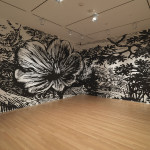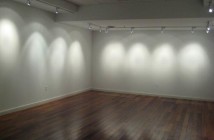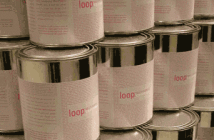EXINE BY PAUL MORRISON AT THE RISD MUSEUM
Possibly the most impressive self-actualizing apparatus of the art world today is just how it manages to reinvent itself. Year after year, idiom after idiom and dialect after dialect, artists manage to find the new black and make art anew.
This idea was reintroduced to me when I heard artist Carla Gannis state in an academic lecture that her recurring theme of Jezebel is a “reconceptualizing” of the idea of Jezebel itself. I’m paraphrasing, of course. I do believe that the idea of conceptualizing something that has already been conceptualized is the clearest evidence that the artists, and the mechanisms that cultivate artists, have far too much time on their hands. Ms. Gannis may have meant to say re-contextualize, but she said “reconceptualize.” I know it’s not a word, I looked it up. It is clearly a perfect example of someone trying to reinvent something. This concept brings me to the real point of this harangue: cave painting, or should I use the re-conceptualized term for it, “Site-specific” art?
Site-specific artwork is conceived, as its name suggests, as art to fill, and or to be in, a definitive location. Sometimes, in its subcategories, it is given the title of “environmental installation,” but either way, it’s art - none the less. For me, Site-specific art introduces a shift in the paradigm about the individual work of art. What would motivate an artist to create a painting with such a narrow definition? If I was commissioned to make a permanent painting in a museum, I can honestly say it would not be about the money. It’s about immortality. It is conjecture on my part, that I even suggest that breaking from the historical method of supply and demand is artistically immoral.
Let’s take British artist Paul Morrison’s recently commissioned wall painting “Exine” at the RISD Museum. The press release informs us that “[t]he artist’s bold black-and-white wall paintings often depict botanical themes… This breathtaking composition features dramatic shifts in scale, with outsized plant life juxtaposed with a distant landscape.” All of which is accurate in its description. I will say this about the actual execution: it is painted with the skill befitting its Museum environment. Whether it’s the artist’s own hand at work here doesn’t really become an issue for me as the viewer; the painting is everything that the press release states. Aside from the flat-files along one of the walls and a large, perfectly middle-tone grey table with six chairs consuming the center of the gallery, the wall painting is a textbook example of Site-specific Art. It is clean, crisp and beautifully completed. Its high-end contrast chroma is strong enough to blend the corners of an understandably square room. Morrison clearly has a command of optical playfulness. The scale is immense and expansive without being imposing or intimidating. Only the monochromatic furniture in the gallery prevents me from wholly filling my peripheral view, which strikes a sour note in the environment Morrison created. The furniture leaves me thinking that maybe “Exine” is not so much wall painting, but wallpaper.
I don’t have a fascination for botanical themes. I won’t be evocative about Morrison’s metaphor of sporopollenin, which is “the outer layer of the wall of a pollen grain”, also known as exine. I felt a greater connection to the process than the content, and I came away with this humorous image of Morrison slaving over a wall-sized linoleum block print with a giant linoleum cutter, though I am fairly certain the artist employs both analog and digital methodology in his creative process. Judging from the quality of the painting’s implementation I would wager that the artist’s process isn’t meant to be on display, but that’s not the point of interest here.
At first I was perplexed by what would motivate a painter to create a painting with such a narrow definition You can’t take it home and hang it over the couch in the living room, and it can only be sold once. If the Museum desires another muralist at some point in the future, the preparators will just paint over “Exine” with a fresh coat of museum white. You’ll never see “Exine” at an auction house; but perhaps the preparatory documentation, like you experience in the work by Christo. Given the essentials about what I know of the history of Site-specific art, I am easing off my opinionated interpretation of what art should be. Instead I remember the word of artist Carla Gannis and her diatribe on the “reconceptualizing” of Jezebel. Then I realize Site-specific art’s invention was only the art world trying to reinvent itself, even if the “site” is a room in a museum and the work looks like that room’s wallpaper.
- Paul Morrison, Exine, wall painting, 2008, Installation View.
- Paul Morrison, Exine, wall painting, 2008, Installation View.
The exhibition Paul Morrison's "Exine" is ongoing.
All images are courtesy of the artist and the RISD Museum.






